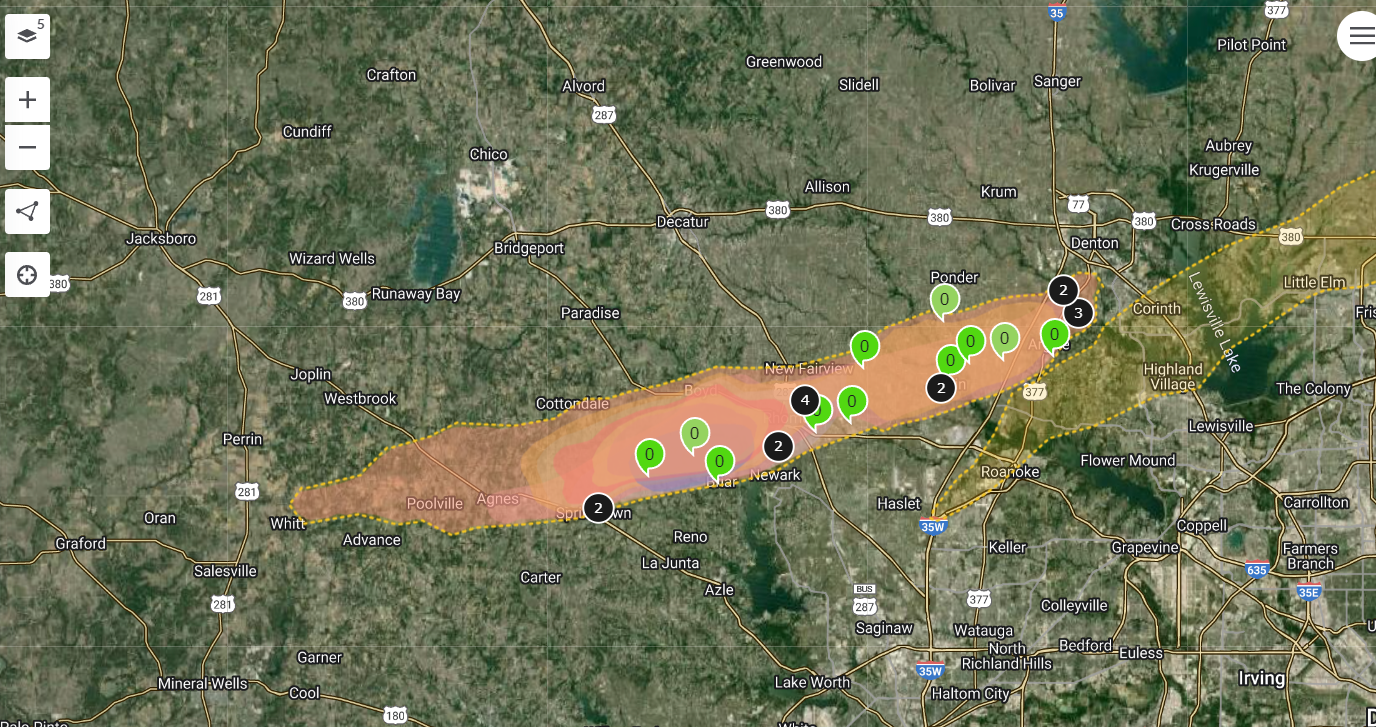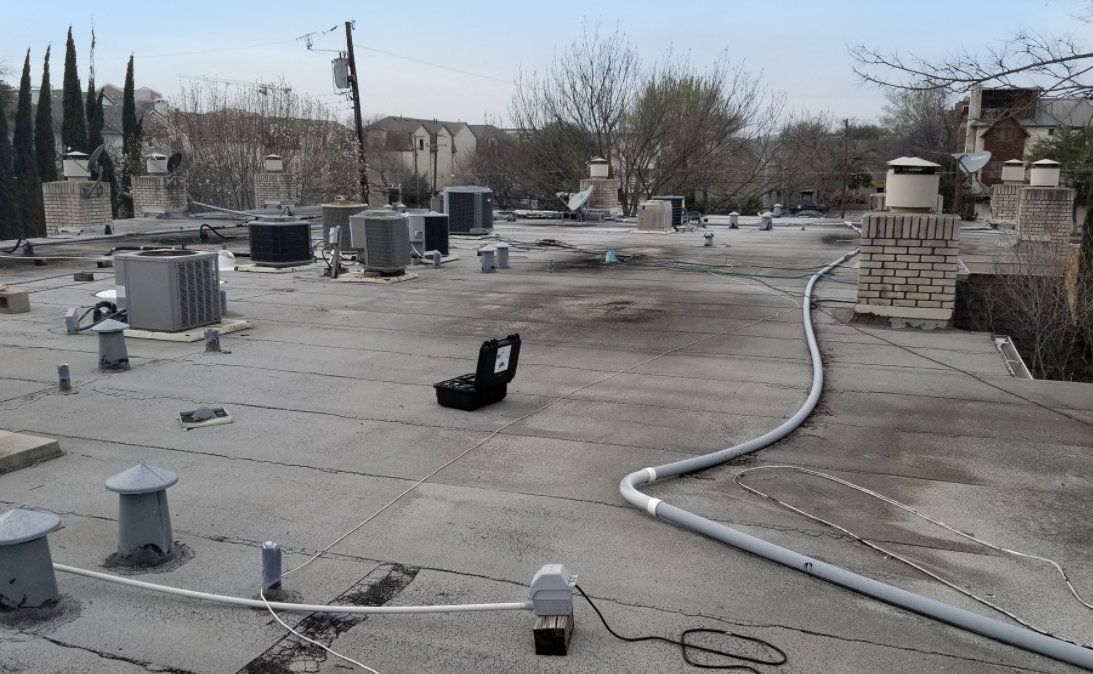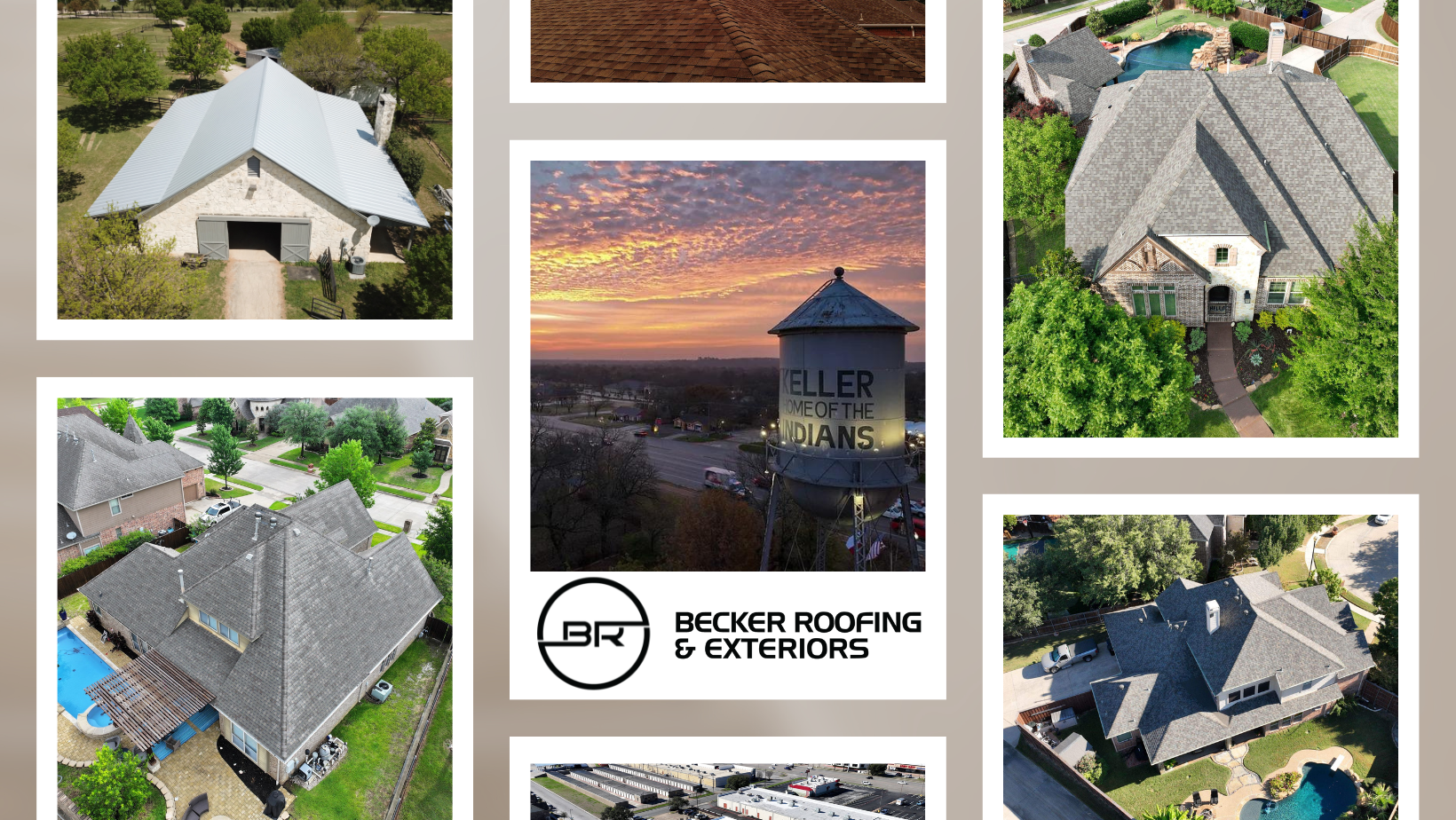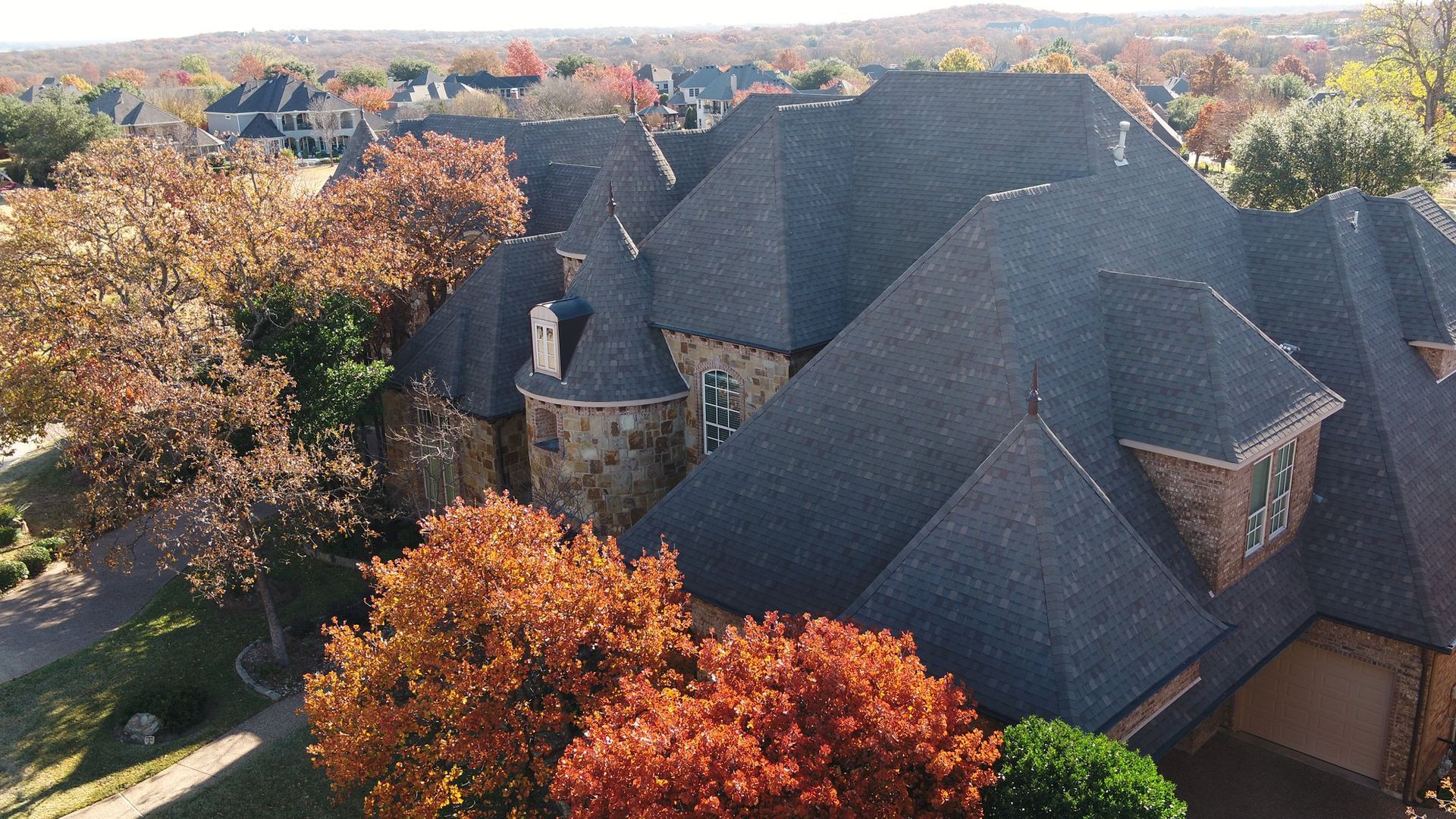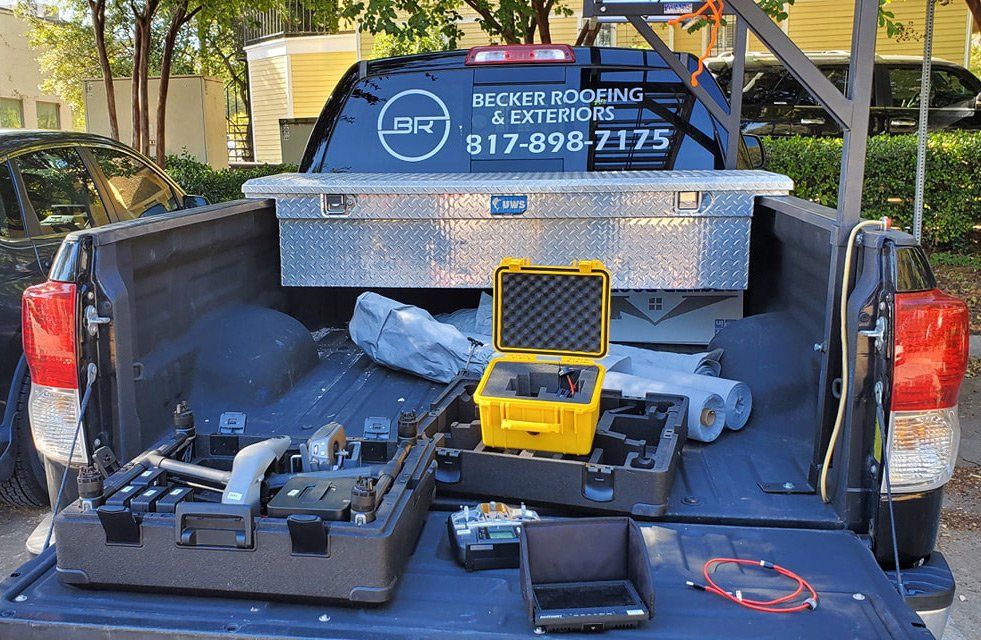Drip Edge or Nah: The Ultimate Guide
This is a subtitle for your new post
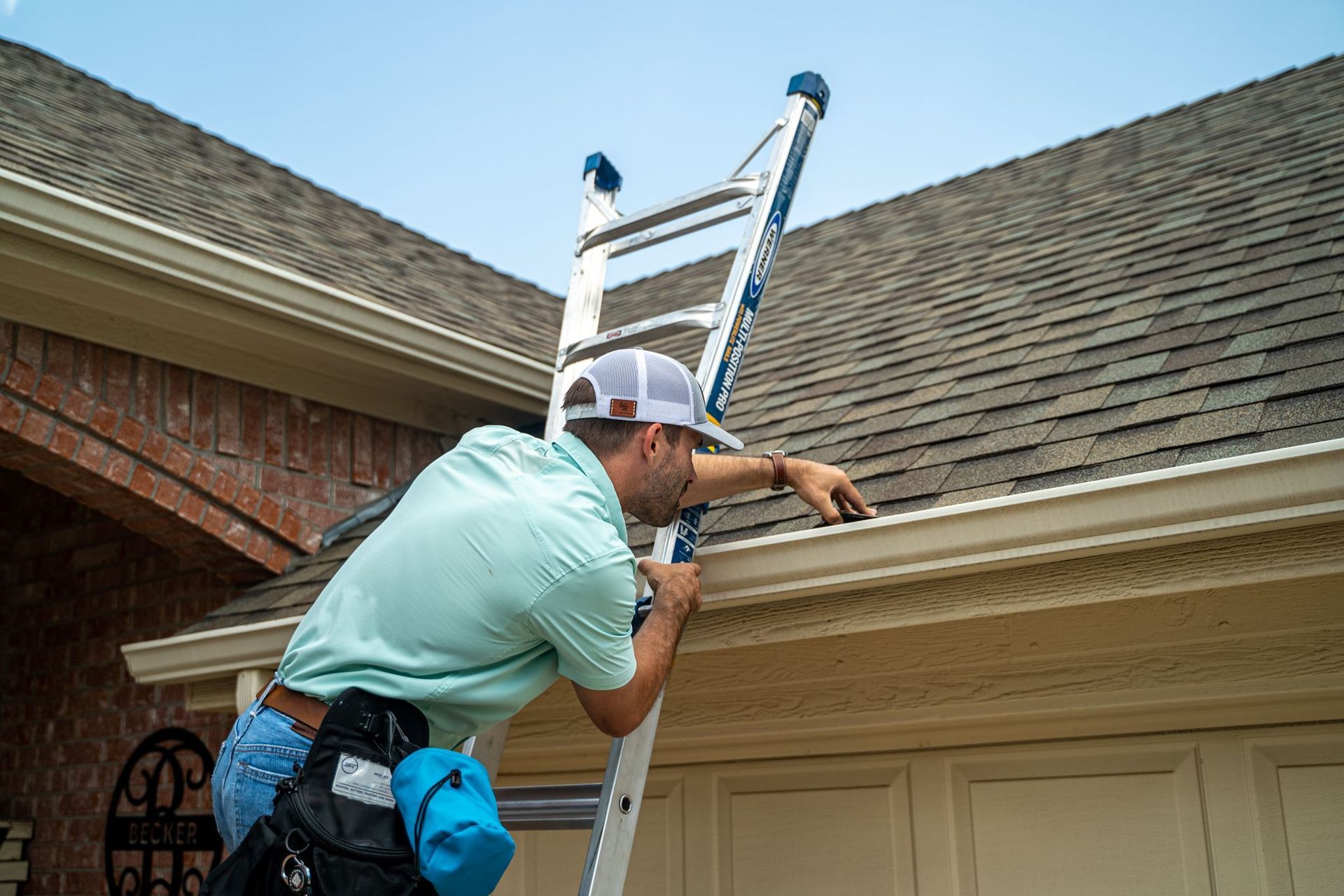
To Drip Edge or Nah: Your Ultimate Guide
Key Highlights
- A drip edge is a crucial component of a roofing system that helps protect against water damage and prolong the lifespan of the roof.
- It is installed along the edges of the, where the roof's shingles or other roofing material meet the eaves and overhangs.
- The installation of drip edges is essential during roof replacement or the installation of a new roof to ensure proper water drainage and prevent water infiltration.
- Different types of drip edges, such as L-type, T-type, C-type, F-type, and Z-type, are available for different roof types and weather conditions.
- Proper installation techniques and the choice of material for drip edges play a significant role in their effectiveness and longevity.
- Regular maintenance and inspections are necessary to ensure the drip edges are functioning correctly and protecting the roof against water damage.
Introduction
Drip edge, a small but essential component of a roofing system, often goes unnoticed. Many homeowners focus on the roofing material itself and overlook the importance of drip edges in preventing water damage and protecting their homes. Drip edge flashing is a piece of metal installed along the edges of a roof, where the roof's shingles or other roofing material meet the eaves and overhangs. It serves as a barrier, directing water away from the roof and preventing it from seeping into the underlying structure.
The main purpose of a drip edge is to protect the roof from water damage, which can lead to costly repairs and structural issues if left untreated. By guiding water away from the edges of the roof, drip edges help prevent roof leaks, wood rot, and other forms of water damage. They also protect the fascia, siding, and porch from water infiltration and prevent rainwater overflow at the gutters.
In this blog, we will explore the different types of drip edges, their role in roofing, code requirements, installation techniques, maintenance tips, and address the debate of whether drip edges are an essential addition or an excessive expense. By the end, you will have a comprehensive understanding of drip edges and their significance in maintaining a durable and water-resistant roofing system.
Understanding Drip Edges
A drip edge is a vital component of a roofing system that helps protect against water damage and prolong the lifespan of the roof. It is typically made of metal and installed along the edges of the roof, where the roof's shingles or other roofing material meet the eaves and overhangs. The drip edge is placed under the roofing material and extends slightly over the edge of the roof, creating a small gap between the roof and the edge of the building.
The primary function of a drip edge is to guide water away from the roof and prevent it from seeping into the underlying structure. It protects the edges of the roof, known as the roof deck, from water damage. Without a drip edge, water can penetrate the roof deck, leading to rot, mold growth, and other types of water damage.
Metal roofing, in particular, benefits from the installation of a drip edge. Metal roofs are more susceptible to water infiltration due to their seams and joints. A drip edge acts as a barrier, preventing water from entering through these vulnerable areas and protecting the integrity of the roofing system.
By directing water away from the roof's edges, a drip edge also helps prevent water from pooling and causing structural damage. It ensures that water flows into the gutters or off the roof, reducing the risk of leaks and water-related issues inside the home. Overall, drip edges are essential for maintaining a watertight and durable roofing system.
The Role of Drip Edges in Roofing
Drip edges play a crucial role in the overall performance and longevity of a roofing system. Acting as a barrier between the roof and the edge of the building, they protect the edges of the roof, known as the roof drip edge, from water damage.
One of the main functions of a drip edge is to guide water away from the roof and prevent it from seeping into the underlying structure. By extending slightly over the edge of the roof, drip edges create a small gap that allows water to flow away from the roof and into the gutters or off the roof.
In addition to protecting against water damage, drip edges also help maintain the integrity of the roofing system by preventing structural damage. By directing water away from the edges of the roof, they reduce the risk of leaks, mold growth, and wood rot. This, in turn, helps prolong the lifespan of the roof and ensures its durability in various weather conditions.
Overall, drip edges are an essential component of a roofing system, providing effective protection against water infiltration and helping maintain the overall structural integrity of the roof.
Code Requirements and Common Practices
Drip edges are not just recommended for roofing systems; they are often required by building codes and regulations. These codes specify the type of drip edge to be used and the installation requirements to ensure proper water drainage and prevent water damage.
The type of drip edge required can vary depending on the roof shingles used and the specific requirements of the building code. For example, in areas with high wind exposure, a specific type of drip edge, such as the F-type drip edge with an extended flange, may be required to provide enhanced protection against wind-driven rain.
Roofing contractors and professionals typically follow common practices when it comes to installing drip edges. They ensure that the drip edge is properly aligned along the edges of the roof and securely fastened to the roof deck. The installation of drip edges usually takes place before the installation of the roof shingles, allowing for smooth and effective water drainage.
It is important for homeowners to work with experienced roofing professionals who are familiar with local building codes and common practices to ensure proper installation and compliance with regulations. By following code requirements and common practices, homeowners can benefit from the effective protection and long-term durability provided by drip edges.
Types of Drip Edge for Different Roofs
Different types of drip edges are available to suit different types of roofs and roofing materials. The choice of drip edge depends on factors such as the type of roof, climate conditions, and personal preference.
For metal roofs, a C-type drip edge is commonly used. This type of drip edge is shaped like the letter C and provides a smooth transition between the metal roof and the fascia board, preventing water from penetrating the roof's edge.
For roofs with shingles, the most common type of drip edge is the L-type drip edge. It features a horizontal flange that extends over the roof deck and a vertical flange that covers the fascia board. The L-shape design helps channel water away from the roof and prevents it from seeping into the underlying structure.
By choosing the appropriate type of drip edge for your specific roof, you can ensure effective water drainage and long-term protection against water damage. Consulting with a roofing professional can help you determine the best drip edge option for your roof type and climate conditions.
Drip Edges for Flat Roofs
Flat roofs require specific considerations when it comes to drip edges. Unlike pitched roofs, where water naturally flows downward, flat roofs need additional assistance to ensure proper water drainage.
For flat roofs, a piece of metal is typically used as a drip edge. The metal drip edge is placed along the edge of the roof, creating a barrier that guides water away from the roof and prevents it from pooling on the surface.
In addition to directing water away from the roof, the drip edge for flat roofs also serves as a protective barrier for the fascia board. By preventing water from seeping into the fascia board, the drip edge helps maintain the structural integrity of the roof and prevents water-related damage.
Installing a drip edge specifically designed for flat roofs is essential to ensure proper water drainage and protect against water infiltration. Professional roofers experienced in flat roof installations can provide guidance on the best drip edge options for flat roofs and ensure correct installation for optimal performance.
Drip Edges for Pitched Roofs
Pitched roofs, with their slope, naturally guide water away from the roof. However, drip edges are still essential for pitched roofs to provide additional protection and ensure effective water drainage.
For pitched roofs, drip edges are typically installed along the edges of the roof, where the roof's shingles or other roofing material meet the eaves and overhangs. The drip edge acts as a barrier, preventing water from seeping into the underlying structure and protecting the edges of the roof.
Drip edges for pitched roofs come in various types, such as the L-type drip edge, which features a horizontal flange over the roof deck and a vertical flange covering the fascia board. This design helps channel water away from the roof and prevents it from seeping into the underlying structure.
Metal roofs also require specific drip edge considerations for pitched roofs. Metal roof drip edges are designed to create a smooth transition between the metal roof and the fascia, preventing water from penetrating the roof's edge and ensuring effective water drainage.
By installing the appropriate drip edge for your pitched roof, you can enhance the roof's protection against water damage and ensure optimal water drainage for a longer-lasting roofing system.
The Importance of Drip Edge Width
The width of a drip edge plays a crucial role in its effectiveness at preventing water infiltration and protecting the roof's edge. A properly sized drip edge ensures a smooth transition between the roof and the edge, guiding water away from the roof and preventing water from seeping into the underlying structure.
Drip edge width affects the overall performance of the roofing system. A wider drip edge provides better protection against water infiltration, as it creates a larger barrier between the roof and the edge. It helps prevent water from seeping underneath the roofing material and causing damage to the roof deck or fascia board.
On the other hand, a narrow drip edge may not provide sufficient coverage, leaving the roof edge vulnerable to water damage. It is important to choose a drip edge width that adequately covers the edge of the roof and allows for effective water drainage.
During the installation of a drip edge, roofing professionals consider the width requirements based on the specific roofing system and the climate conditions in the area. By ensuring the correct drip edge width, homeowners can enhance their roof's protection against water damage and prolong its lifespan.
How Width Affects Performance
The width of a drip edge directly affects its performance in preventing water infiltration and protecting the roof's edge. A wider drip edge allows for a smoother transition between the roof and the edge, ensuring better water drainage and reducing the risk of water-related issues.
A wider drip edge provides a larger barrier between the roof and the edge, creating a more effective safeguard against water seepage. It helps guide water away from the roof and prevents it from seeping into the underlying structure, such as the roof deck or fascia board.
Additionally, a wider drip edge allows for easier installation and ensures a more secure attachment to the roof. Roofing professionals can smoothly integrate the wider drip edge into the roofing work, providing better protection and a neater finish.
An extended flange on a wider drip edge also offers enhanced protection against wind-driven rain and prevents water from dripping behind the gutters. This additional coverage helps maintain the integrity of the roofing system and reduces the risk of water damage.
By considering the width of the drip edge during installation, homeowners can improve the overall performance of their roofing system and minimize the potential for water infiltration and related issues.
Selection Tips for Homeowners
Choosing the right drip edge for your roofing system requires careful consideration and understanding of the specific requirements of your roof. While consulting with a roofing professional is recommended, here are a few tips to help homeowners make an informed decision:
- Research local building codes and regulations: Familiarize yourself with the requirements for drip edge installations in your area to ensure compliance and proper protection for your roof.
- Consider the type of roof and roofing material: Different types of roofs and roofing materials may require specific types of drip edges for optimal performance. Consult with a roofing company or professional to determine the best option for your specific roof type.
- Evaluate the cost and durability: Compare the cost and durability of different drip edge materials, such as aluminum, galvanized steel, copper, and vinyl. Consider the long-term benefits and choose a drip edge that provides the best value for your investment.
- Look for professional installation services: Hiring a reputable roofing company or professional roofer is crucial for proper drip edge installation. Look for experienced professionals who can ensure correct installation and provide advice on the best drip edge options for your roof.
Remember, the cost of a drip edge installation is usually estimated per linear foot. Consider your budget and consult with roofing professionals to get accurate cost estimates and recommendations for your specific roofing needs.
Material Choices for Drip Edges
When it comes to drip edge materials, several options are available, each with its own pros and cons. The choice of drip edge material depends on factors such as durability, resistance to corrosion, and compatibility with the roofing material. Here are some commonly used materials for drip edges:
- Aluminum: Lightweight, durable, and resistant to corrosion. Can be painted to match the roof's color scheme.
- Galvanized Steel: Strong and long-lasting, with a layer of zinc coating for protection against rust and corrosion.
- Copper: Offers both durability and an aesthetically pleasing appearance. Develops a natural patina over time.
- Vinyl: Cost-effective, lightweight, and resistant to rust and corrosion. Requires minimal maintenance and comes in different colors.
Consider your specific roofing needs, budget, and desired aesthetic when choosing a drip edge material. Consulting with a roofing professional can help you make an informed decision and ensure compatibility with your roofing system.
Pros and Cons of Aluminum, PVC, and Other Materials
Different materials used for drip edges have their own advantages and disadvantages. Here are some pros and cons of commonly used drip edge materials:
- Aluminum: Pros - Lightweight, durable, corrosion-resistant, and easy to work with. Can be painted to match the roof's color scheme. Cons - Can be more expensive than other materials.
- PVC: Pros - Cost-effective, lightweight, resistant to rust and corrosion, and requires minimal maintenance. Comes in various colors. Cons - May not be as durable as other materials and can be prone to cracking in extreme weather conditions.
- Galvanized Steel: Pros - Strong, long-lasting, and provides good protection against rust and corrosion. Cons - Can be heavier and more expensive than other materials.
- Copper: Pros - Durable, aesthetically pleasing, and develops a natural patina over time. Cons - More expensive than other materials and may require special installation techniques.
Consider the specific benefits and drawbacks of each material when choosing the drip edge for your roofing system. Consulting with a roofing professional can help you make an informed decision based on your specific requirements and budget.
Innovative Materials: TPO and PVC Coatings
In addition to traditional materials like aluminum, galvanized steel, and copper, there are also innovative options available for drip edge coatings. Two popular choices are TPO (Thermoplastic Olefin) and PVC (Polyvinyl Chloride) coatings.
TPO coatings provide excellent energy efficiency and reflectivity, making them a popular choice for green building projects. They can help reduce the heat transfer to the roof and improve the overall energy efficiency of the building.
PVC coatings offer similar benefits, with added flexibility and durability. They are resistant to chemicals, UV radiation, and extreme weather conditions, making them suitable for a wide range of climates.
Both TPO and PVC coatings provide reliable protection against water damage and help prolong the lifespan of the roofing system. Consult with a roofing professional to determine if these innovative materials are suitable for your specific roofing needs and climate conditions.
Installation Techniques for Drip Edges
Proper installation of drip edges is crucial for their effectiveness in protecting the roof against water damage. While it is possible for homeowners to install drip edges themselves, it is recommended to hire a professional roofing contractor or a professional roofer for a seamless installation process.
Roofing professionals have the experience and knowledge to ensure correct alignment and attachment of the drip edge along the edges of the roof. They can also provide recommendations on the best installation techniques based on the specific roofing system and materials used.
By hiring a professional for drip edge installation, homeowners can have peace of mind knowing that the drip edges are properly installed and will provide optimal protection for their roofing system.
Best Practices for Flat and Pitched Roofs
The installation of drip edges on flat and pitched roofs requires specific best practices to ensure proper water drainage and protection against water damage.
For flat roofs, it is essential to install the drip edge along the edge of the roof, creating a barrier that guides water away from the roof's surface. The drip edge should be securely attached to the roof deck, ensuring a tight seal and preventing water from seeping underneath.
For pitched roofs, the drip edge should be installed along the edges of the roof, where the roof's shingles or other roofing material meet the eaves and overhangs. Proper alignment and attachment are crucial to ensure effective water drainage and prevent water infiltration.
Professional roofers follow industry best practices when installing drip edges, ensuring proper integration with the roofing system and adherence to local building codes. By following these best practices, homeowners can ensure optimal performance and longevity of their drip edges.
Common Mistakes to Avoid
When installing drip edges, it is important to avoid common mistakes that can compromise their effectiveness and lead to roofing issues. Here are some common mistakes to avoid:
- Improper alignment: Drip edges should be properly aligned along the edges of the roof to ensure effective water drainage. Misalignment can result in water infiltration and damage to the roof deck and fascia board.
- Inadequate attachment: Drip edges should be securely attached to the roof deck to prevent them from becoming dislodged or damaged during severe weather conditions.
- Incorrect material choice: Choosing the wrong drip edge material for your specific roofing system and climate conditions can lead to premature deterioration and water damage.
- Insufficient coverage: Drip edges should adequately cover the edges of the roof to provide maximum protection against water infiltration. Insufficient coverage can leave the roof vulnerable to water damage.
By hiring a professional roofer and following industry best practices, homeowners can avoid these common installation mistakes and ensure proper functioning and longevity of their drip edges.
Drip Edge Maintenance and Longevity
Proper maintenance is essential to ensure the longevity and durability of drip edges. While edges are designed to withstand harsh weather conditions and provide long-term protection, inspection and care can help identify any issues and prevent potential water damage. Here some maintenance tips to prolong the lifespan of your drip edges:
- Regular inspections: Inspect the drip edges periodically to check for any signs of damage, such as rust, corrosion, or loose attachment.
- Clean debris: Remove any debris, leaves, or dirt that may accumulate on the drip edges, as they can obstruct water drainage and lead to water infiltration.
- Check for leaks: During heavy rain or snowfall, check for any signs of leaks near the edges of the roof. If you notice any leaks, it may indicate a problem with the drip edges that requires immediate attention.
- Address issues promptly: If you notice any damage or issues with the drip edges, such as rust or loose attachment, contact a professional roofer to address the problem promptly.
By following these maintenance tips and addressing any issues promptly, homeowners can ensure the longevity and effectiveness of their drip edges in protecting their roofing system against water damage.
Routine Inspection and Care Tips
Routine inspection and care of drip edges are essential to maintain the integrity of the roofing system. Here are some tips for routine inspection and care:
- Inspect drip edges at least once a year: Check the drip edges for any signs of damage, such as rust, corrosion, or loose attachment.
- Clean debris regularly: Remove any debris, leaves, or dirt that may accumulate on the drip edges to ensure proper water drainage.
- Check for leaks: During heavy rain or snowfall, inspect the edges of the roof for any signs of leaks. If you notice any leaks, it may indicate a problem with the drip edges.
- Address issues promptly: If you notice any damage or issues with the drip edges, contact a professional roofer to address the problem promptly.
By performing routine inspections and addressing any issues promptly, homeowners can ensure the optimal performance and longevity of their drip edges, protecting their roofing system against water damage.
When to Replace Your Drip Edge
Like any other roofing component, drip edges may need to be replaced over time due to deterioration or damage. Here are some signs that indicate it may be time to replace your drip edge:
- Rust or corrosion: If you notice significant rust or corrosion on your drip edge, it may indicate that it is no longer providing effective protection and needs to be replaced.
- Loose attachment: If the drip edge becomes loose or detached from the roof, it can compromise its functionality and effectiveness. It is important to address this issue promptly and consider replacing the drip edge if necessary.
- Visible damage: If the drip edge shows visible signs of damage, such as dents, cracks, or bent sections, it may not provide proper water drainage and protection. In such cases, it is advisable to replace the drip edge.
- Roof replacement: If you are planning to replace your roof, it is recommended to also replace the drip edge to ensure compatibility and optimal performance with the new roofing system.
By monitoring the condition of your drip edge and addressing any signs of deterioration or damage, you can ensure the continued protection of your roofing system and prevent potential water damage.
The Debate: Essential or Excessive?
The debate surrounding drip edges revolves around whether they are an essential addition to a roofing system or an excessive expense. While some argue that drip edges are necessary to prevent water damage and protect the roof's structural integrity, others question their effectiveness and cost-benefit ratio.
Proponents of drip edges argue that they play a crucial role in directing water away from the roof and preventing water infiltration. They believe that drip edges are essential to protect the edges of the roof from structural damage, wood rot, and mold growth caused by water exposure.
On the other hand, skeptics argue that alternative methods, such as overhanging shingles or continuous flashing, can provide similar protection at a lower cost. They question the necessity of drip edges and argue that the cost of installation and maintenance may outweigh their benefits.
Ultimately, the decision to install drip edges depends on various factors, including local building codes, climate conditions, and personal preference. Consulting with a roofing professional can help homeowners make an informed decision based on their specific roofing needs and budget.
Arguments for the Necessity of Drip Edges
Proponents of drip edges argue that they are a necessary addition to a roofing system to prevent water damage and protect against structural issues. Here are some arguments in favor of the necessity of drip edges:
- Protection against water damage: Drip edges serve as a barrier, directing water away from the roof and preventing it from seeping into the underlying structure. This helps prevent water damage, including rot, mold growth, and structural issues.
- Preservation of the fascia board: By directing water away from the fascia board, drip edges help maintain its integrity and prevent water-related damage. This prolongs the life of the fascia board and reduces the risk of wood rot or other issues.
- Code compliance: Many local building codes require the installation of drip edges to ensure proper water drainage and protection of the roofing system. Compliance with these codes is essential for homeowners and can impact the resale value of the property.
Considering these arguments, proponents believe that drip edges are an essential addition to a roofing system, providing long-term protection against water damage and preserving the overall integrity of the roof.
Counterarguments and Skepticism
Skeptics of drip edges question their necessity and argue that alternative methods can provide similar protection at a lower cost. Here are some counterarguments and points of skepticism surrounding drip edges:
- Cost-benefit analysis: Skeptics argue that the cost of installing and maintaining drip edges may outweigh their benefits. They suggest that alternative methods, such as overhanging shingles or continuous flashing, can provide similar protection at a lower cost.
- Effectiveness of alternative methods: Some skeptics claim that overhanging shingles or continuous flashing can effectively direct water away from the roof without the need for drip edges. They question whether drip edges provide significant additional protection.
- Climate considerations: Skeptics argue that the necessity of drip edges may vary depending on the climate conditions in the area. In regions with less rainfall or milder weather, the need for drip edges may be less significant.
While skeptics raise valid points and alternative methods may offer some level of protection, proponents argue that drip edges provide an added layer of defense against water damage and are necessary for maintaining the long-term integrity of the roofing system.
Conclusion
In conclusion, understanding the role of drip edges in roofing is crucial for homeowners. While code requirements and common practices vary, selecting the right type and width can significantly impact performance. Materials like aluminum and PVC offer pros and cons, with innovative options like TPO and PVC coatings emerging. Proper installation techniques and routine maintenance ensure longevity. The debate over drip edges being essential or excessive continues, emphasizing the importance of drip edges' protective function. Ultimately, drip edges provide added protection against water damage, making them a valuable investment for roof health and durability.
Frequently Asked Questions
What is the difference between drip edge types?
The different types of drip edges mainly differ in their shape and design, catering to different roofing materials and specific requirements. For example, L-type and T-type drip edges are commonly used for shingle roofs, while C-type and Z-type drip edges are ideal for metal roofs. Each type has its own benefits and features, ensuring effective water drainage and protection for the roof edge and fascia board.
Can I install a drip edge on an existing roof?
Yes, it is possible to install a drip edge on an existing roof. However, it is recommended to hire a professional roofing contractor for proper installation. They can assess the condition of the existing roof and ensure that the drip edge is correctly installed to provide effective protection against water damage.
How does climate influence drip edge choice?
Climate plays a significant role in the choice of drip edge materials and profiles. In areas with heavy rain or extreme weather conditions, it is important to choose a drip edge that can withstand these conditions without deteriorating. Consult with a roofing professional to determine the best drip edge options for your specific climate.
Are there alternatives to traditional drip edges?
Yes, there are alternative methods to traditional drip edges, such as using overhanging shingles or continuous flashing. These methods can provide similar protection against water infiltration and may be more cost-effective. Consult with a roofing professional to determine the best alternative method for your specific roofing system and budget.
Our Location
Hours
Hours
Contact Us
License # 03-0235

